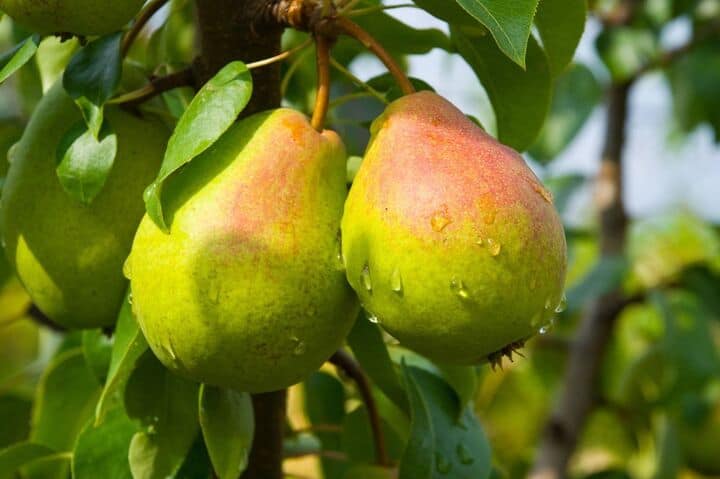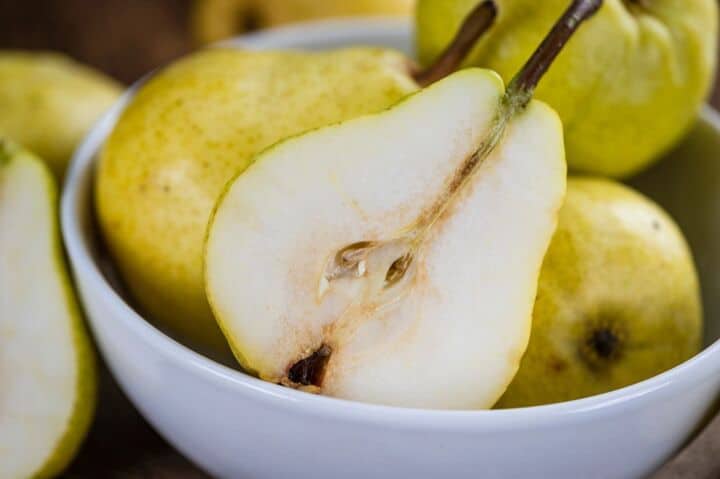If you have an abundance of ripe pears, freezing them is a practical way to preserve their sweetness and flavor. Instead of letting them go to waste, freezing allows you to enjoy them later in smoothies, desserts or sauces. Here’s a guide to freezing pears that ensures they remain fresh and versatile.

Freezing pears: The basics
There are several ways to freeze pears depending on how you plan to use them later. Below, you’ll find step-by-step methods for freezing raw or fully cooked pears, ensuring they remain in the best condition.
Method 1: Freezing raw pears
Freezing raw pears is simple and works well for smoothies, baking and snacking. This method also takes the least amount of time.
Step 1: Wash the pears thoroughly under cool running water to remove any dirt or residue.
Step 2: Peel and slice the pears. Peeling is important because the skin may become tough after freezing and thawing. Removing the peel also ensures the pears will have a smooth texture when used in recipes.
Step 3: Dip the slices in a lemon juice and water solution (1 tablespoon of lemon juice per cup of water) for a few minutes to prevent browning. This helps maintain their bright color and prevents oxidation.
Step 4: Pat the pear slices dry with a clean towel, then spread them out in a single layer on a baking sheet. Make sure the slices don’t touch to prevent them from sticking together.
Step 5: Place the tray in the freezer until the pear slices are frozen solid, usually for a few hours.
Step 6: Once frozen, transfer the pear slices into freezer-safe bags or airtight containers. Remove as much air as possible to prevent freezer burn. Label the bags with the freezing date and store them in the freezer for up to 12 months.

Method 2: Freezing cooked pears
Freezing fully cooked pears is best when you want to use them for sauces, purees or baked dishes where texture isn’t as critical. Examples include muffins or breads.
Step 1: Cook the pears by poaching, stewing, air frying or roasting them until they are soft and tender. Avoid overcooking, as you’ll want the pears to maintain some amount of texture.
Step 2: Allow the cooked pears to cool completely.
Step 3: Once cool, place the cooked pear into freezer-safe bags. If you have used any cooking liquid, such as sugar syrup, fruit juice or water, and wish to include it with the pears, leave some space at the top of the container to account for expansion as the liquid freezes.
Step 4: Remove excess air from the bags before sealing them tightly. Label the containers with the date and store them in the freezer for up to 10 months.

Using frozen pears
How you use your frozen pears will depend on how they were prepared before freezing. There are a variety of uses for both raw and frozen applications.
Raw pears
Frozen raw pears can be added directly to smoothies without thawing. For raw preparations, like salads, thawing them in the refrigerator overnight allows the pears to soften and retain their flavor. However, if you need a quicker option, you can place the frozen pear slices in a microwave-safe dish and use the defrost setting, which will thaw them in just a few minutes.
“Whenever I wind up with extra pears, freezing slices is a great way to preserve them to use in future recipes. Frozen pears add their gentle earthiness to smoothies and they work in cobblers and pies for a quick dessert. They’re also great for making drinks — my favorite is pear thyme simple syrup for luscious fall cocktails.”
— Susannah Brinkley-Henry, Feast + West
Alternatively, you can add frozen pears directly to recipes like muffins or pies. They will thaw and cook in the oven, contributing moisture and flavor without requiring prior thawing. Raw frozen pears can be easily incorporated into desserts or sauces and are excellent for topping pancakes, waffles or yogurt. You can also use them in savory dishes like salads or grain bowls.
Cooked pears
Cooked pears can be easily incorporated into desserts or sauces. They are great for topping sweet breakfasts, like oatmeal. Due to their soft texture, they are generally not suitable for savory dishes.
Tips for freezing pears
When freezing pears, it’s important to choose the right ones. Opt for ripe but firm pears, as overripe varieties may become mushy more easily. To prevent freezer burn, which can compromise the flavor and texture of your pears, make sure to remove as much air as possible from bags or containers before sealing them. Finally, always label your frozen items with the date they were frozen to keep track of their freshness.
Final thoughts
Freezing pears is a simple and effective way to preserve their natural sweetness and flavor long after their season has passed. You can ensure the pairs retain texture by selecting firm, ripe ones and using the right freezing techniques. They can be a convenient option for many recipes, from baked goods to smoothies.
By following these methods, you can enjoy the taste of ripe pears at any time. With a bit of preparation, frozen pears can add deliciousness to your culinary creations all year round.
Gen is a professional chef, writer and editor living in Southern California. She is the owner and recipe creator behind Two Cloves Kitchen, a food site featuring contemporary, California-inspired recipes. She has edited over 20 novels, short stories and essays for publication.